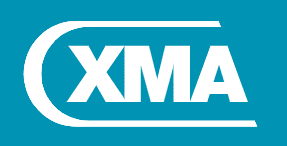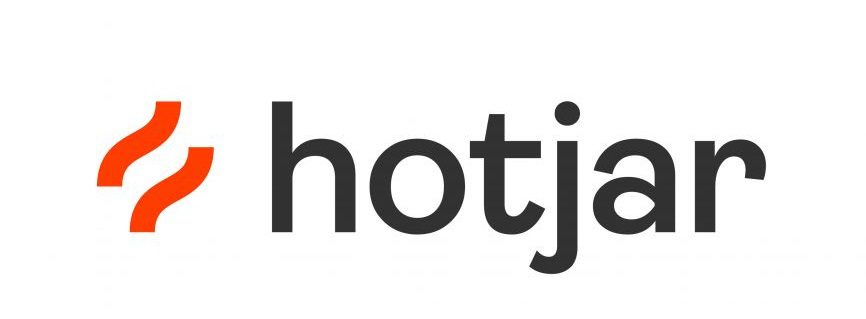5 reasons why 3D printers are beneficial in the classroom
Enhance, learn and inspire in the classroom
As every academic year passes, new technology seeps into the classroom. These devices are predominantly upgrades of the existing i.e. handheld tablets and smart whiteboards, but it isn’t often that a revolutionary piece of technology is introduced into the classroom that has the power to make huge waves in both the way we teach, and the way we learn.
One of the more innovative pieces of technology appearing throughout the education sector in the UK over the last couple of years is the 3D printer. Used globally by manufacturers in many industries, the 3D printing technology can be used to enhance classroom based learning and inspire the inventors and creators of tomorrow.
The adoption of 3D printing across schools has been slower than originally expected, due to the perceived expense of purchasing and integrating the technology. But in a bid to infiltrate classrooms and re-engage students, the cost of 3D printers has reduced, and training has become more accessible.
In this blog, we look at 5 reasons why 3D printing technology can have a beneficial impact on the classroom.
- Prepare students for the future of technology
From building cars to creating prosthetic limbs, 3D printers are becoming more and more popular in a huge range of industries. In fact, last year 67% of UK manufacturers were using the technology in some way or another.
By giving students an opportunity to become familiar with the technology that is set to play a huge role in the future manufacturing industry, teachers are able to equip them with the skills they’ll need for a smoother transition into the working world.
- Increase student engagement within lessons
In a report from The Department for Education (DfE) on the use of 3D printers in the curriculum, it was shown that teachers saw a huge rise in engagement in lessons when printers were used within lessons.
The study showed that even pupils with poor concentration were seen to produce tangible results and felt confident to explore more complex designs and ideas throughout the session.
By stepping away from traditional methods of teaching, lessons will be given a ‘wow’ factor, making students more excited to come to school and re-engage them in the learning process.
- Give students a better understanding of subjects
3D technology allows students to do much more than draw with pen and paper. Investigating volume and areas of spheres? Have your students create and learn. Teaching about how wind turbines are manufactured? You can show your students the process right before their eyes.
Giving your students the opportunity to become more hands-on with their learning to help them gain a better grasp of complex subjects and inspire a new way of thinking about subjects that might have otherwise assumed to be predominantly textbook based.
- Encourage collaboration between peers and departments
Within the DfE’s report on 3D printing, it was highlighted that one of the key successes from introducing 3D technology into schools was how it not only encouraged students to work together on projects, but it also brought different subjects together.
During the study, teachers and technicians from both design technology and physics were able to work together closely to create a model of scattered alpha particles of gold leaf foil. This exercise meant that students and teachers were able to bridge the gap between STEM subjects and gain a better understanding of how skills can overlap.
- Inspire students to engage in STEM subjects
Although the number of students choosing to take an interest in STEM subjects is rising, experts are still concerned that the rise won’t necessarily mean students will go on to having careers in those fields.
Introducing students to the technology used within the working world of STEM will give you the opportunity to inspire them to go on and succeed in gaining great opportunities when students go on to graduate and kickstart their career.
XMA emerge as positive channel to successful work placement
Most students look forward to the end of their GCSEs as it means they have more free time to spend with their friends but for Kit Swerdlow (16), a student at Nottingham free school Channeling Positivity, it’s a different story.
Kit currently spends a day a week at XMA, with the rest of his time spent at Channeling Positivity. Channeling Positivity is an alternative provision free school aimed at ages 13-16 needing another option other than mainstream schooling, where Kit has been studying for his GCSEs in English, Maths and i-Media.
Kit attended an Open Day at XMA last September and really enjoyed it. He was very keen to secure work experience at the company and was delighted when he was offered it. Once he has finished his exams, the time he spends at XMA will increase to two days a week and he can’t wait.
So far he has spent most of his time in the marketing department where he has been involved in creating and delivering email marketing campaigns and general marketing duties. In addition, he has also drafted the copy for a welcome pack for new staff when they join the company.
He is now spending time in the company’s commercial department and there are plans for him to go into the sales and customer service departments too.
“I am incredibly proud of Kit and all that he has done to develop his employability and enterprise skills.” said Justine Drury, Founder and Principal of Channeling Positivity.
“Unlike many apprentices, Kit will be work ready from day one as a result of his and XMA’s long term commitment to our work experience programme.”
“I love the work and the people are great – I feel very much part of the team. I am learning a lot and the experience is preparing me well for the world of work. I can’t wait to spend more time at XMA and when I finish school I would love to do an apprenticeship with the company.”
Apple Professional Learning – bespoke coaching and mentoring with educators
How do you engage your staff in developing learning?
How can teachers amplify the learning with technology?
How can you create and develop your vision for learning?
Preparing and developing your staff is so important. We support teaching and learning, using a bespoke coaching and mentoring model. This can support new staff or continue to develop more-experienced members of your team.
XMA Apple Professional Learning Specialists are our in-house coaching and learning consultants. Our innovative team has experience as senior leaders and teachers, from early years, primary, secondary and higher education.
Education strategic planning is a real strength of our team. A clear vision and plan needs to be in place for the technology to be implemented successfully.
We can offer hands-on sessions that are held at your school, college or university. They are tailored to your specific needs, to make sure you’re using your Apple products most effectively. We can introduce new ideas for teaching, enable co-creation of resources and collaboratively reflect on the learning.
The Apple Teacher programme helps teachers to start their journey with iPad and Mac. Through a series of modules, we can show how the tools can be integrated into daily lessons. As teachers develop, we can support through bespoke sessions, to move their practice forward.
Coding has become a real focus, from early years into primary and secondary schools. We can model effective practice in the classroom, with hands-on lessons and team-teaching with staff. Developing collaboration and team-work, we build confidence and effective problem-solving, with a progressive coding curriculum.
Apple Professional Learning is essential to coach, mentor and support teachers in advancing their practice.
Barclay Primary School
Supporting targeted learning in the UK’s largest primary school with Google for Education
Google for Education has enable teachers to cater to the wide range of individual needs of Barclay’s 1200 pupils, utilising new technologies like Google Expeditions to create more engaging and inspiring lessons.
Ormiston Denes Academy
Using Google Apps for Education at Ormiston Denes Academy
Ormiston Denes Academy are using Google Apps for Education as the backbone for a new way of learning, using a combination of technologies to improve the flow of communication.
Gracemount High School
One-to-one iPad deployment at Gracemount High School
See how XMA helped Gracemount High School to implement one-to-one iPad deployment in the classroom through the allLearn with iPad programme from XMA.
Front Lawn Academy
Chromebooks, Google Docs and personalised learning programmes at Front Lawn Academy
Hear from students and teachers at Front Lawn on how Chromebooks, Google Docs and personalised learning programmes have transformed collaborative working, behaviour and results.
Southbourne Junior School
Discovering Chromebook has transformed learning and teaching at pioneering primary school
Southbourne Junior School has introduced over 140 Chromebooks to their learners and teachers encouraging collaboration both inside and outside of the classroom.
When Neil Hall took over as Head of IT at Southbourne Junior School, days were spent wheeling around a laptop trolley from classroom to classroom. As any teacher will know, equipment failings can be one of the most time-consuming and frustrating factors within education.
The school’s IT support resource spent two hours a week on-site and was in high demand. The rest of the time staff were forced to work around IT problems which meant devices were often either abandoned altogether or used to a fraction of their full capabilities. Even when everything was in full working order, IT time in the classroom was minimal. A timetabled activity for an hour a week, IT lessons focused on teaching general office skills such as word processing, spreadsheets and presentations. The internet was used for research and teachers lost confidence in utilising IT within other subject areas.
With the support from Headteacher, Luke Hanna, Neil began researching what other schools were doing. It was on a visit to another school that they witnessed a group of pupils utilising Chromebooks that they decided to research them further.
Having contacted Google for guidance, the school was directed to XMA. Following the success of the pioneering allLearn programme which was already a market leader with iPad, XMA were about to launch allLearn with Chromebook. This was the start of a long-term, collaborative partnership with XMA providing guidance and support on Southbourne Junior School’s mobile device deployment. Through this partnership, Southbourne Junior School has currently deployed over 140 Chromebooks to their learners.
XMA worked with the school to explore their specific requirements.
Some of the main features of Chromebook result in hidden cost savings. With Chromebook web based operating system, regular updates are delivered automatically, saving precious IT resource time manually installing patches. User data and settings are stored in Google Cloud, which means devices can be easily shared. Data is backed up in the event of a device being lost and they don’t need to be imaged after each academic year.
Google’s Online Management Console, included for each Chromebook, allows teachers to react instantly, whether it be introducing or changing firewalls and filters or deploying Apps to devices. Google Apps for Education allow users to work collaboratively on the same documents at the same time from multiple locations. School staff have also found it much easier to manage multiple user groups and updates can be made centrally.
Since introducing Chromebooks, use of IT across the curriculum has increased significantly.
Due to their relative ease of use, teachers have embraced them quickly and are using them in lessons across the curriculum. Further to this, Chromebooks are helping to facilitate communication between the school and parents. Pupils create their own web pages to store homework and information, which can be seen by parents as well as teachers in the classroom.
Southbourne Junior School plans to become an IT specialist school. They will be one of the first schools in the UK to have three of their existing teaching staff accredited as Google Educators.
Children leaving Southbourne Junior School will be equipped with basic knowledge and understanding of the very latest technology, placing them at an advantage for further education and their future career. A high percentage of the jobs that our children will be doing in the future don’t currently exist and one way to skill up children for these roles is to give them access to the very latest, cutting edge technology and encourage them to use this technology productively to aid learning.
XMA remain on hand to help, support and advise. Through two in-house educational experts, Dr. Steve Bunce and David Ryan, both educators themselves – XMA offers first- hand knowledge of how technology can enhance the learning environment and support both staff and learners in the pedagogical application of Chromebook in the classroom.
St Cyres School
Improving results with iPad
St Cyres School increased their Level 2+ results by over 20% with the support of iPad and XMA.
Bosworth Academy
Bosworth Academy and allLearn with iPad
Bosworth Academy used XMA’s allLearn with iPad to transform the way their students learn, and the way their teachers teach.





 Monitoring by Hotjar
Monitoring by Hotjar